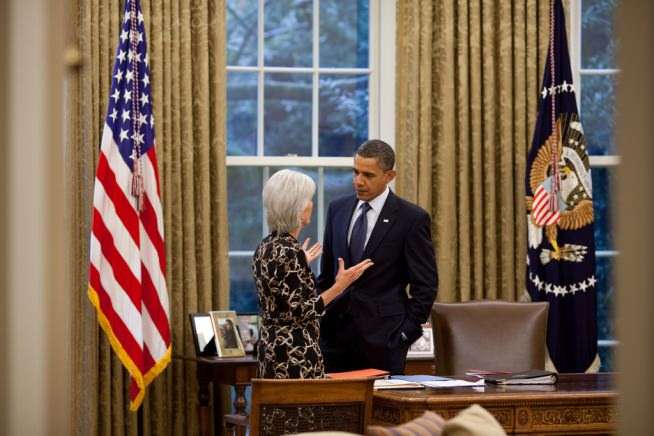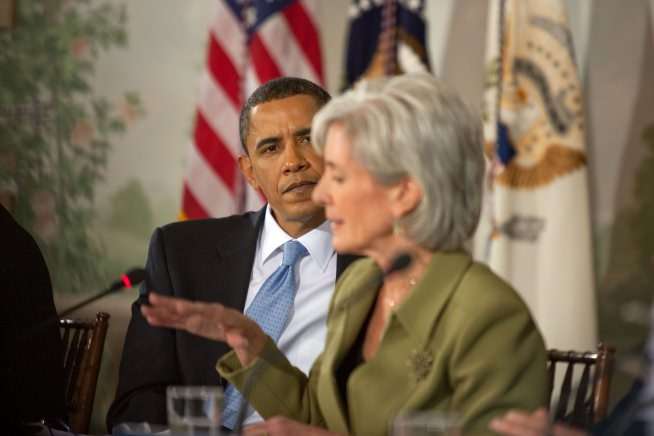Obama Touted Obamacare's Exchanges Even as They Failed Key Tests

On September 26, President Obama stood in front a big crowd at Prince George's Community College in Largo, Maryland and described how easy it would be to shop for health insurance when new health exchanges opened across the nation the following week.
"There's been a lot of things said, a lot of misinformation, a lot of confusion," he said. His speech was intended to help set the record straight.
"Starting on Tuesday, every American can visit HealthCare.gov to find out what's called the insurance marketplace for your state."
From there, he said, the process of buying insurance would be "real simple. It's a website where you can compare and purchase affordable health insurance plans, side-by-side, the same way you shop for a plane ticket on Kayak—same way you shop for a TV on Amazon. You just go on and you start looking, and here are all the options."
"If you've ever tried to buy insurance on your own," he said, "I promise you this is a lot easier."
But Obama didn't know that actually using the exchanges would be simple, or easy. He didn't know that the complete federal exchange system would work at all. He couldn't have.
Because on September 26, less than a week before the exchanges were set to open, no test had been performed to see whether a user could successfully navigate the federal exchange system all the way from beginning to end.
That's according to a Washington Post report on the many pre-launch warning signs the administration and insurers had that exchanges weren't up to snuff. Notably, the Post doesn't say whether any users were ever able to get all the way through a complete system test before the day that it launched.
The system appears to have failed other late-breaking tests, however. Another test, reportedly performed just a few days before the October 1 launch, was designed to see whether the system could handle several thousand users at the same time. According to the Post, the site "crashed after a simulation in which just a few hundred people tried to log on simultaneously."
The problem wasn't fixed. And just a few minutes after midnight on October 1, despite urgings from insurers to delay or limit the rollout, the federal exchange system went down when about 2,000 users logged in simultaneously.
So when officials spent the next few days saying that the problems were due to overwhelming demand, they were not being strictly accurate. Opening day traffic may have been higher than anticipated. But the exchange system locked up under a rather small load.
The problem was not, as top administration tech adviser Todd Park claimed, that a system was designed for 50,000 simultaneous users crashed after being hit with an unexpected 250,000 users at once. It was that the system they built couldn't handle low and totally predictable user volume.
Maybe senior administration officials didn't know all the details when they offered their explanations. Communications between contractors and bureaucrats working on the exchanges seem to have been exceptionally poor. But if so, that's just another administrative failure to account for in this disastrous project.
Even if top officials were initially unaware of the full extent of the exchange problems, it seems unlikely that no one in the administration grasped the risks of launching an online system that didn't work. And they may have been preparing for that possibility.

A recent report by Adam Mazmanian* in FCW, a tech-policy trade publication, suggests that just days before the exchanges launched, administration health officials may have been making contingency plans. On September 26, the same day that Obama gave his speech in Maryland, Serco, a Virginia contractor got an $87 million update to its existing $114 million contract with the Centers for Medicare and Medicaid Services, which managed the exchange implementation process. It's not clear what the additional funding is for, but Serco's existing deal, awarded over the summer, was for processing some 6.2 million paper applications through the exchanges.
That suggests that in the week prior to the exchange launch, some in the administration may have been expecting a greater than previously anticipated need for paper enrollment. Certainly the failure of key system tests, and the lateness of other important trial runs, should have highlighted the system's deep problems and general state of unreadiness.
But the correct response was not to quietly look for alternatives, hope for the best, and mislead the public about both what to expect and, after launch, the true state of what was going on. Yet that's exactly what the administration did. And, if President Obama's passive, explanation-free speech yesterday, which urged people frustrated by the online exchanges enroll via clunky manual workarounds, is any indication, it's what the administration is still doing.
*Disclosure: Like me, Mazmanian is a regular contributor of movie reviews to The Washington Times.



Show Comments (181)